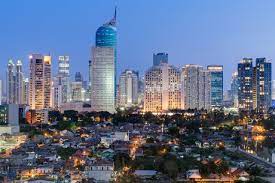
By: Dr Mehmood Ul Hassan Khan
The ongoing COP28 has once again highlighted the strategic significance of green energies in the world. Currently, Indonesia is pursuing massive green transition to decarbonize while achieving economic resilience, which requires significant foreign direct investments (FDIs).
It has also started the concept of transition finance to secure the financial support required to implement long-term policies changes on the path to net zero and more sustainable practices in the country. Gradually, it is speeding up its transition away from fossil fuels, towards cleaner renewable energy sources which is commendable.
The issuance of a presidential regulation as a legal basis for phasing out the country’s entire fleet of coal-fired power stations by 2050 has provided the legal cover for green transformation in the country. It is indeed a giant step in right direction.
It is good omen that its Nationally Determined Contribution (NDC) increased its pledge to reduce 31.89 percent of emissions from the business as usual scenario (or 29 percent in its previous target) by 2030. With international assistance, the reduction target is 43.20 percent up from 41 percent.
Indonesia also received funding support for its energy transition through the Just Energy Transition Partnership from G7 countries plus Denmark, Norway, and Northern Ireland during the G20 Summit. This group of countries has promised funding of up to US$20 billion for emissions reduction projects in Indonesia. Somehow, it has been delayed.
Unfortunately, the growth of its clean energy production decreased during 2022. The slowdown of its bio-diesel program was one of the main reasons which led to a decrease in the growth of renewable energy from 11.5 percent to 10.4 percent in terms of total energy production.
Moreover, the increase in the capacity of renewable power plants was also quite small compared to the 4 gigawatts capacity addition of coal fired power plant throughout the island of Java last year. This was a result of the post-pandemic economic recovery, which is still heavily reliant on fossil fuels.
To achieve its 2030 emissions target, Indonesian government needs to take integrated steps to accelerate the capacity of renewable energy. In this regard, it should revise its Electricity Supply Business Plan (ESBP) to align with its climate targets for 2022. The renewable power plant projects should be started as soon as possible and continue until 2025 and onward.
Many mega projects such as the Patuha geothermal power plant in West Java (55 megawatts), the Peusangan and Asahan hydroelectric power plants in Aceh and North Sumatra Province (45 megawatts and 174 megawatts), and the Cirata floating solar power plant in West Java (145 megawatts) are being pursued during 2023.
In order to encourage other renewable energy projects the government needs to provide tax reductions, and clarify and simplify the business process for renewable energy investments.
In addition, regulations and incentives for rooftop solar panel installations in residential and commercial areas also need to be improved to enable more people to start using clean energy at home.
Additionally, Indonesia has just started to develop a green hydrogen industry. It gas set a goal to produce 328 megawatts of green hydrogen by 2030, and increase it to 52 gigawatts by 2060. However, there is an urgent need to reduce high production costs and a lack of supporting infrastructure in the country.
It should also chalk out a detailed plan to develop the green hydrogen industry, and create policies to support it. Hopefully it will help make the cost of production more affordable and attract investment from both inside and outside the country.
The government also needs to start on pilot projects to prove that the hydrogen industry is a good proposition and befitting investment. Luckily, during 2023 Pertamina, a state-owned enterprise is planning to produce 100 kilograms of green hydrogen per day in the Ulubelu geothermal area in Lampung.
On the other hand, the nickel industry is pivotal in electrifying transportation, as nickel is one of the main raw materials for making electric vehicle batteries. Interestingly, Indonesia possesses one of the largest nickel reserves in the world. Unfortunately, most of the nickel is still exported in the form of raw materials which must be readjusted.
Nevertheless, Indonesian government has started to increase the value of nickel commodities, through limiting nickel ore exports to meet its ambition to become the “king” of electric vehicle battery producers in the world. However, emerging trade dispute with the EU has hindered its growth in the country. The government needs to come up with a clear plan for processing nickel that focuses on end products, like battery or electric vehicle components in 2024 and beyond.
Many research studies clearly indicate that Indonesia has a chance to reach net-zero emissions by 2050 according to the Paris Agreement. Hopefully, this will also lead to more sustainable economic growth.
Indonesia Green Taxonomy 1.0 in January and the issuance of Presidential Regulation “Perpres 112/2022” on the Acceleration of Renewable Energy development for Power Supply in September have become two priority themes for sustainable finance and energy transition during 2022-2023.
In summary, Indonesia has become a biodiversity hotspot. However, this diverse climate and topography that blesses the country with plenty of natural resources, is also a major reason in making it one of the most vulnerable to the impacts of climate change which urgently needs paradigm shift in the national policies against increasing incidents of climate change.
The green transformation and institutionalization of green economy securing high average GDP growth up to 6.5 percent annually until 2050 should be pursued and implemented.
Indonesia has developed a Green Economy Index (GEI) as a tool to measure the country’s progress towards a green economy, by using selected indicators representing economic, environmental, and social nexus. Overall, Indonesia’s GEI shows a rising trend over the period 2011-2020, indicating that the country is on the right track towards green economic growth.
In addition to this a low share of renewable energy in Indonesia’s primary energy mix and the degradation of the country’s peat lands, signaling that more ambitious environmental policies are urgently needed in order to transform Indonesia’s economy
Unfortunately, Indonesia is among the world’s most exposed countries to sea level rise. It faces great threats of other weather related disasters such as forest and land fires, landslides, storms, and drought that have already destroyed infrastructure and degraded forest and coastal ecosystems. Thus comprehensive overhauling of national policies of climate change and green economy should be revised.
Resultantly, Indonesian farmers have been impacted by a longer than usual dry season that has disrupted rice production and pushed up rice prices and ultimately created price hike in the country.
Comparative studies reveal that much of Indonesia’s greenhouse gas emissions are from land-use change and forestry, followed by energy, agriculture, waste, and industrial processes. According to the World Resources Institute (WRI), GHG emissions from energy production, land-use change and forestry comprise approximately 82 percent of Indonesia’s total emissions. Since 2021, it has signaled that a net-zero agenda will become an integral part of the country’s national development strategy.
Indonesia accounting for around 25 percent of the world’s geothermal potential which must be further enhanced. It is also home to vast reserves of a mineral critical for electric vehicle (EV) batteries, nickel.
In just three years, Indonesia has signed more than a dozen deals worth more than $15 billion for battery materials and electric vehicle production with global manufacturers, including Hyundai, LG, and Foxconn.
On the consumer side, there have been various initiatives to build up the country’s EV ecosystem. It agreed to a zero-emission vehicles (ZEVs) collective goal that aims, by 2030, to electrify over 50 percent of light-duty vehicles (LDVs) and at least 30 percent of medium- and heavy-duty vehicles (MHDVs).
According to the Indonesian Green Climate Fund the state budget allocated to climate change mitigation is around USD 5.7 billion per year, representing only about 30 percent of the financial needs to achieve its nationally determined contribution (NDC) targets. This has prompted a notable response from both, international investors and the country’s private sector.
Indonesia’s private sector has already mobilized investment into green growth in many ways. Most notably, energy companies have established their own net-zero agendas and expanded their profile into a range of green businesses, such as clean nickel mining technology, the EV ecosystem, nature-based solutions, and land restoration.
There is no choice but to reckon with the reality of climate change because of its inherent vulnerabilities, Indonesia undoubtedly faces many challenges. However, it has also demonstrated its ability to leverage its unique characteristics and innovative private sector to turn them into opportunities. So the final destination of Green Indonesian economy is not far away.
(Author is Executive Director at The Center for South & International Studies (CSAIS) Islamabad &
Regional Expert on Indonesia, ASEAN, CPEC & BRI)


